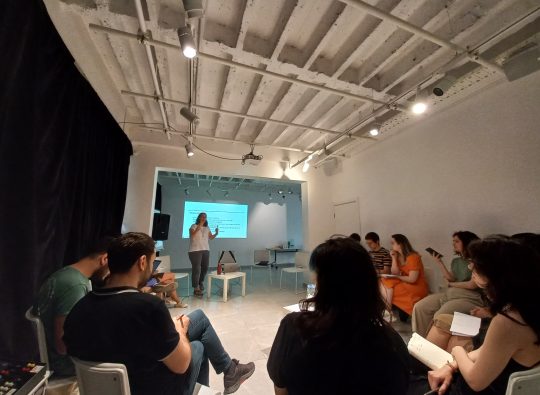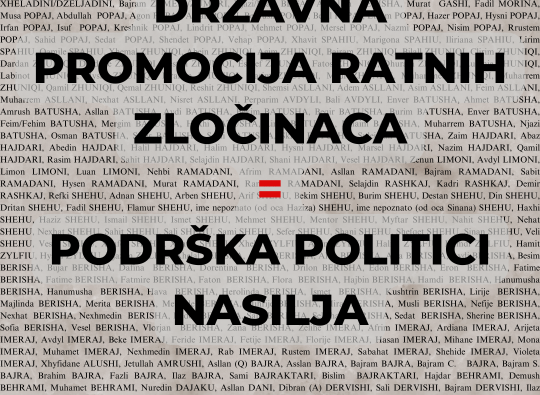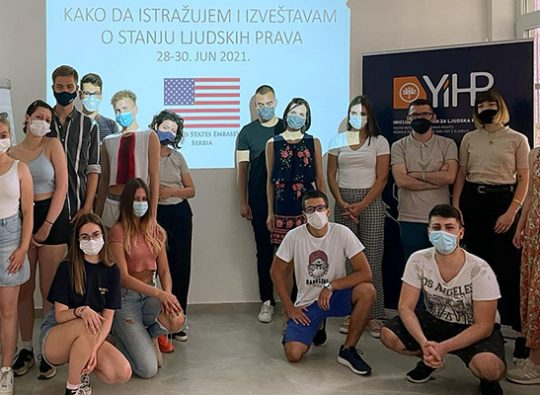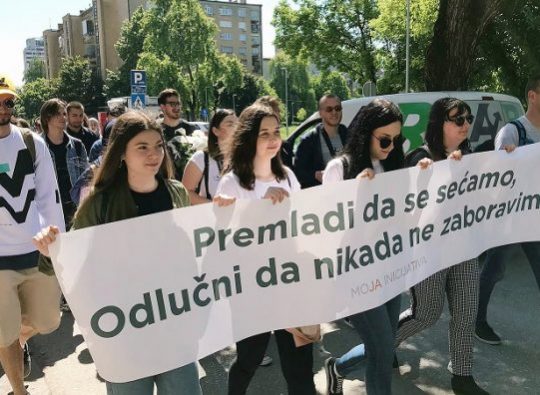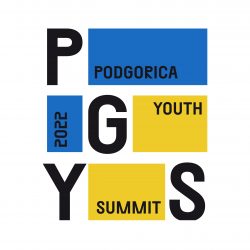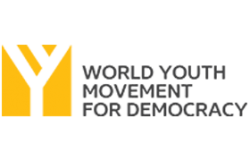On the first day of the workshop, the participants had an opportunity to learn more about the formation and operations of various paramilitary units (the Scorpions, the Anti-Terrorist Operations Unit, the White Eagles, the Yellow Wasps) and their links with the Serbian Interior Ministry, the Yugoslav Army and Serbian Intelligence Agency. A group of young people from Vrnjačka Banja, Čačak, Mitrovica, Novi Sad, Niš and Belgrade first went through the documents such as the shorthand notes of the meeting Slobodan Milošević had with the presidents of municipalities in Serbia on March 16 1991, where the formation of reserve police forces was mentioned for the first time, as well as the 1994 report of the UN Commission of Experts for former Yugoslavia, which discusses more extensively the operations of paramilitary units.
In the article “Short History of Paramilitary Units in Post-Yugoslav Wars 1991-1995”, Dejan Anastasijević states fragments of the said report, according to which, 82 para-military groups were active on the territory of former Yugoslavia, 55 of which were Serbian, 13 Croatian and 14 Bosniak. According to this report: “Para-military organisations are present in several forms. Some groups are highly organised and operate at multiple locations in cooperation with regular military forces. Others are loosely organised and act independently in one village from occasion to occasion. Some were formed before the conflict, others subsequently, while some were formed according to current needs. They were composed of the members of regular army, police and the Territorial Defence, local civilians, returnees from foreign countries and foreigners. According to some reports, they also included criminals released from serving their sentences in order to join these groups.
Further, the participants had the opportunity to watch Part 1 of Filip Švarm’s documentary series “The Unit” co-produced by the Vreme Weekly and RTV B92 in order to learn more about how para-militaries were formed, which is excellently demonstrated in the genesis of formation of the Special Operation Unit. Also, the participants watched the movie “Jackals” about the unit some of whose members were charged with (the second instance proceedings are underway) crimes in Kosovo (Ćuška, Ljubenić, Pavljan and Zahač).
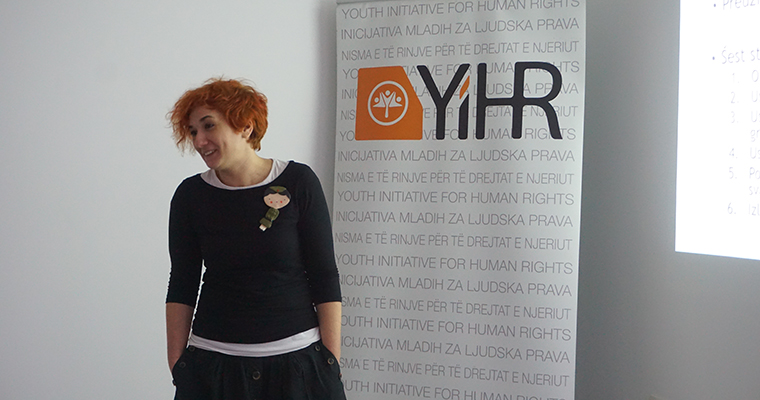
On the second day, the first lecture was delivered by Milica Stojanović, a journalist from BIRN (Balkan Investigative Reporting Network). She talked about the trial of Jovica Stanišić and Frenki Simatović, former heads of the Serbian Intelligence Agency, before the ICTY, currently on retrial.
According to the indictment (2003, revised in 2008), Stanišić and Simatović are accused of joint criminal enterprise in which, together with other members of the Republic of Srpska Krajina, the Republic of Srpska and Serbia, their goal was to forcefully and permanently remove the majority of non-Serbs, in particular Croats, Bosnian Muslims and Bosnian Croats, from larger territories of Croatia and Bosnia and Herzegovina by committing the crimes of persecution, murders, deportations and inhuman acts (forced relocations).
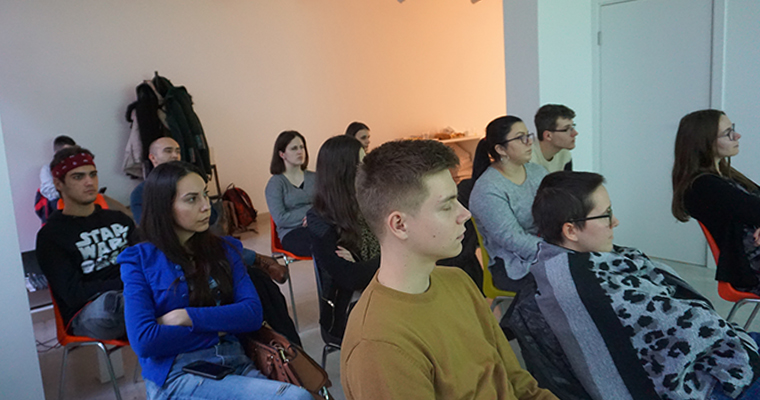
Milica Stojanović explained the role of this duo according to the indictment, as well as according to the course of the trial in the first and in the repeated proceedings. This in particular includes:
- The channels of links between key actors in the joint criminal enterprises in Belgrade, on specific locations and at the local level, and among them;
- The formation of special units of the Serbian Intelligence Agency and other forces which participated in crimes in Croatia and Bosnia and Herzegovina;
- The funding, training and logistic support for Serbian Intelligence Agency special units and other Serbian forces; permanent deployment of these forces without instructing them to restrain from committing unlawful acts, and filling the forces which were committing crimes.
Marko Milosavljević, YIHR, delivered the lecture on the operation and crimes of the Serb Volunteer Guard. He presented the development and operations of this unit through its links with the Serbian Intelligence Agency and their warfare in Croatia and Bosnia and Herzegovina. He also discussed the issue of impunity in court proceedings against members of the Serbian Intelligence Agency who participated in crimes from Dalj, Bijeljina, Zvornik through Sanski Most.
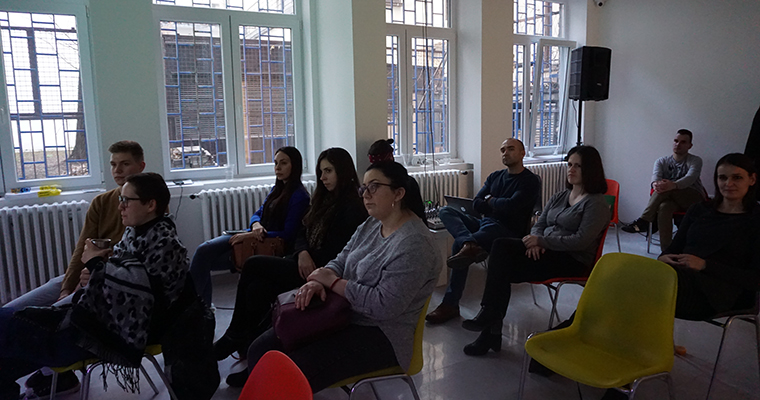
The last lecture was delivered by Jovana Kolarić, Humanitarian Law Centre researcher, who presented the Serbian Radical Party in the context of its para-military and political operations since 1990 (since the establishment of the Serbian Chetnik Movement). She talked about the recruitment phase, their work through war/crisis headquarters, the cases of warfare and crimes in which members of the Serbian Radical Party participated in Croatia and in Vojvodina, as well as their role in taking over municipalities in Bosnia and Herzegovina, which was part of strategic military goals of the Republic of Srpska.

